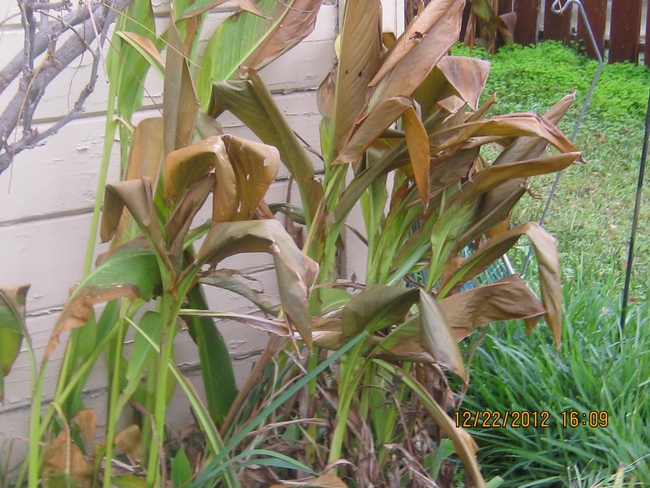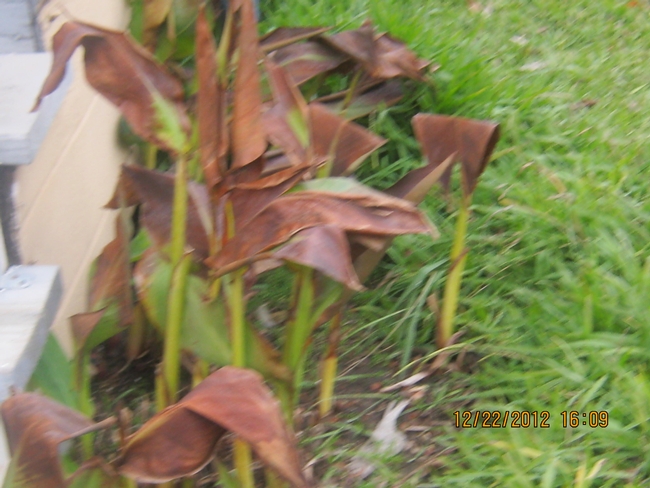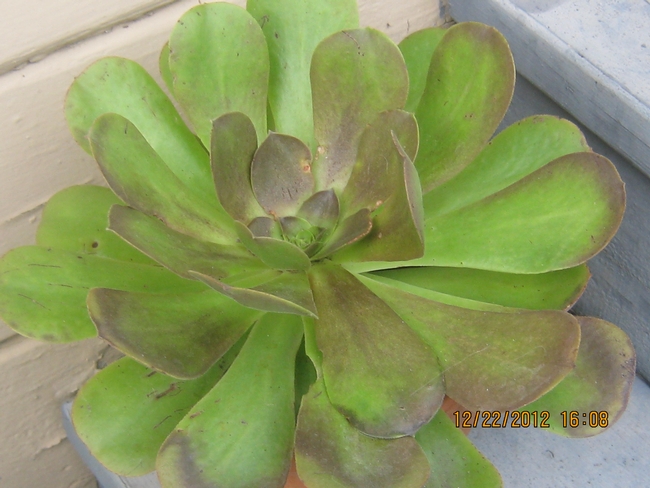Frost is water vapor freezing on the surface at a temperature of 32°F or below, forming tiny ice crystals when the water vapor condenses. Frost injury may damage tender plants but not necessarily kill them. A freeze is when surface temperatures of 32°F or colder prevail for days. A hard freeze is 25°F or below and, with both types of freeze, vegetation will be damaged unless protected. Killing freeze depends on hardiness of plants and their exposure. The effects of temperature vary with species, stage of growth, age, general health and water content.
Frost injury occurs when these tiny ice crystals form on the leaf surface, drawing moisture from the leaf tissue. Thus, dehydrated plants are vulnerable. Keep them watered, as water gives off heat. Damp soil retains heat better than dry soil. This protects the roots and warms the air near the soil. Manage your irrigation carefully, keeping the moisture level as even as possible. Do not water more than 3 days in a row. If it has rained recently, you might be okay.
A little protection goes a long way. Place frost sensitive plants in sheltered locations (on a landing, next to a structure, on a bench against the house on the south side). Ground level temperature is colder than the air temperature. Western and southern exposures tend to be warmest. Block walls, rocks and patios collect and reflect the heat of the sun. Although full sun is warmer than shaded locations, night and early morning temperatures cause most frost damage (daybreak is the coldest).
DO NOT prune/cut back anything until the danger of frost has passed. The damage might ultimately reach the roots of the plant--not good. The frost damaged stems and leaves of the Canna and other plants in these photos will continue to help trap warm air. The damage may look bad, but new growth may come out of tissue that might, to you, appear dead. Do not prune frost damaged plants until they begin showing new growth in the spring.
To protect your plants, you need to understand: cold weather, how plants respond to cold, how heat is transferred, how to prevent frost damage, how to care for plants that have been damaged by frost. Review these subjects in AZ 1002 Frost Protection at http://ag.arizona.edu/pubs/garden/az1002.pdf
For citrus and other subtropicals, you can run a sprinkler system slowly or furrow-irrigation through the night. They may need some form of coverage. Take steps to protect them. Then, if they are damaged, steps can be taken to aid recovery. See publication 8100 http://anrcatalog.ucdavis.edu/pdf/8100.pdf
Bring your Medicinal Aloe indoors and consider doing the same with other succulents.
Here are some other sites you might check out:
http://ucanr.org/sites/sacmg/Frost_Protection/
http://ucanr.edu/sites/MarinMG/Marin_Master_Gardener_Help_Desk/Leaflet/How_to_protect_plants_from_frost/
http://cesolano.ucanr.edu/newsletters/Winter_200927313.pdf
http://aggie-horticulture.tamu.edu/travis/docs/FrostsandFreezes.pdf
Attached Images:



